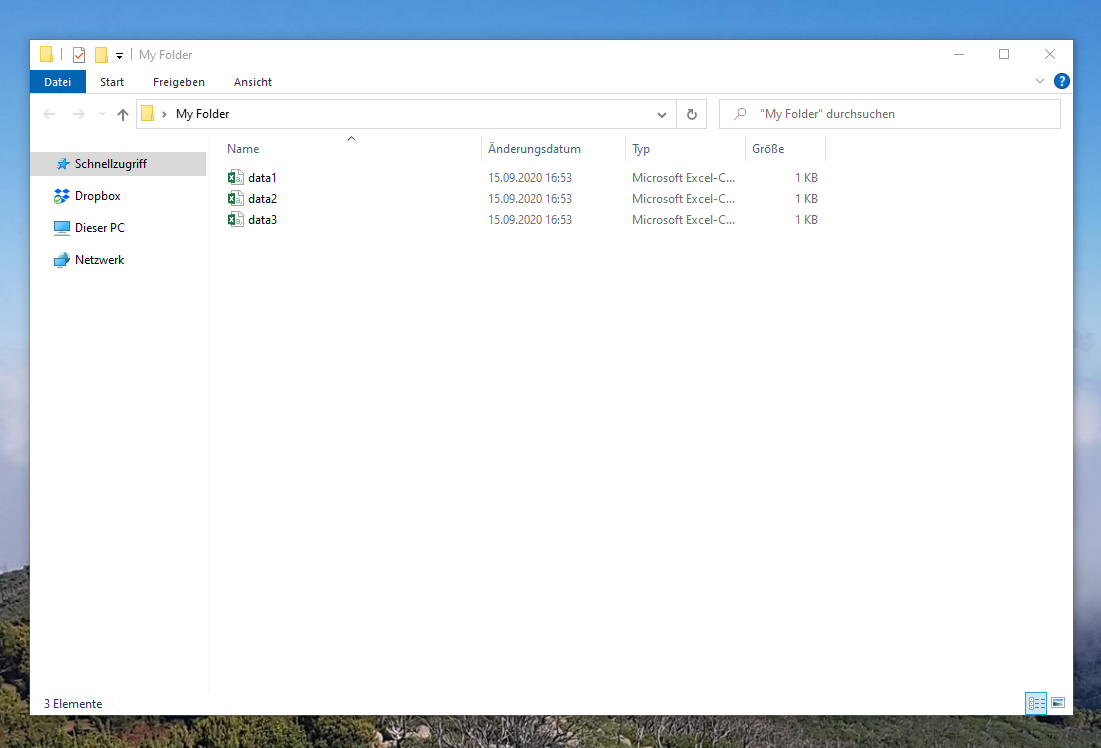R Read All Csv Files in Folder
Write & Read Multiple CSV Files Using for-Loop in R (two Examples)
In this R tutorial you'll larn how to export and import multiple CSV files using a for-loop.
Table of contents:
Let's take a look at some R codes in action:
Creation of Example Data
Kickoff, we'll accept to construct some exemplifying data frames in R:
data1 <- data. frame (x1 = 1 : 5, # First information frame x2 = letters[ 1 : 5 ] ) data2 <- data. frame (y1 = 1 : 5, # 2nd data frame y2 = letters[ one : 5 ] ) data3 <- information. frame (z1 = 1 : 5, # Third data frame z2 = letters[ 1 : 5 ] )
data1 <- data.frame(x1 = 1:5, # Commencement data frame x2 = messages[1:five]) data2 <- data.frame(y1 = 1:five, # Second data frame y2 = letters[1:5]) data3 <- data.frame(z1 = 1:5, # Third data frame z2 = messages[1:5])
We too have to create a directory binder on our figurer were we tin can store our data as CSV files. For this, we can apply the dir.create office as shown below:
dir. create ( "C:/Users/Joach/Desktop/My Binder" ) # Create folder
dir.create("C:/Users/Joach/Desktop/My Folder") # Create binder
Note that yous have to supplant the previously used directory path by your own path. Subsequently running the previous R code you should see a new folder on your desktop.
Example 1: Writing Multiple CSV Files to Folder Using for-Loop
In this Example, I'll show how to export multiple data frames from R to a directory using a for-loop. Beginning, nosotros take to specify the names of all data frames nosotros desire to export:
data_names <- c( "data1", "data2", "data3" ) # Create vector of names data_names # Print names # "data1" "data2" "data3"
data_names <- c("data1", "data2", "data3") # Create vector of names data_names # Print names # "data1" "data2" "data3"
At present, we can run a for-loop that writes all our information frames to a folder using the write.csv2 function as shown below. Within the for-loop, we are specifying the names of our data frames wrapped by the become function and our directory path:
for (i in 1 :length(data_names) ) { # Head of for-loop write. csv2 ( get (data_names[i] ), # Write CSV files to binder paste0( "C:/Users/Joach/Desktop/My Folder/", data_names[i], ".csv" ), row. names = Imitation ) }
for(i in 1:length(data_names)) { # Head of for-loop write.csv2(get(data_names[i]), # Write CSV files to folder paste0("C:/Users/Joach/Desktop/My Binder/", data_names[i], ".csv"), row.names = Imitation) }

Figure 1 shows how our folder should await like after running the previous R codes. In the folder, you can run into iii CSV files.
Example ii: Reading Multiple CSV Files from Folder Using for-Loop
Example ii illustrates how to import multiple CSV files using a for-loop in R. First, we accept to use the list.files function to extract all file names in our folder:
data_files <- list. files ( "C:/Users/Joach/Desktop/My Folder" ) # Identify file names data_files # Print file names # "data1.csv" "data2.csv" "data3.csv"
data_files <- listing.files("C:/Users/Joach/Desktop/My Binder") # Identify file names data_files # Print file names # "data1.csv" "data2.csv" "data3.csv"
Now, we tin can write a for-loop containing the assign, paste0, and read.csv2 functions to read and save all files in our directory:
for (i in 1 :length(data_files) ) { # Head of for-loop assign(paste0( "information", i), # Read and store information frames read. csv2 (paste0( "C:/Users/Joach/Desktop/My Folder/", data_files[i] ) ) ) }
for(i in ane:length(data_files)) { # Caput of for-loop assign(paste0("data", i), # Read and shop data frames read.csv2(paste0("C:/Users/Joach/Desktop/My Folder/", data_files[i]))) }
Our data frames are now stored in the data objects data1, data2, and data3:
data1 # Print starting time information frame # x1 x2 # 1 one a # 2 2 b # 3 3 c # 4 four d # v 5 e data2 # Print 2d data frame # y1 y2 # 1 i a # 2 2 b # 3 3 c # 4 iv d # v 5 e data3 # Print third data frame # z1 z2 # 1 one a # ii 2 b # 3 3 c # 4 4 d # 5 5 e
data1 # Print first information frame # x1 x2 # i 1 a # 2 ii b # 3 3 c # iv iv d # 5 5 eastward data2 # Print second information frame # y1 y2 # 1 1 a # 2 2 b # three 3 c # four 4 d # 5 five e data3 # Print 3rd data frame # z1 z2 # 1 one a # ii ii b # iii 3 c # 4 iv d # 5 5 e
Video, Farther Resources & Summary
Have a expect at the following video of my YouTube aqueduct. I show the R programming syntax of this tutorial in the video.
The YouTube video will be added presently.
Furthermore, yous might want to read the other tutorials on this website. You can notice some tutorials about for-loops below.
- for-Loop in R
- Loops in R
- Bank check in R if a Directory Exists and Create if Information technology doesn't
- Import & Merge Multiple csv Files
- List All Files with Specific Extension
- The R Programming Language
To summarize: This article illustrated how to read and write CSVs in loops in the R programming linguistic communication. If you take further questions, don't hesitate to permit me know in the comments.
Source: https://statisticsglobe.com/r-write-read-multiple-csv-files-for-loop
0 Response to "R Read All Csv Files in Folder"
Enviar um comentário